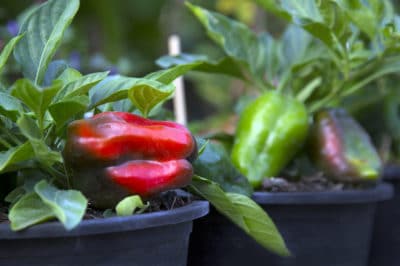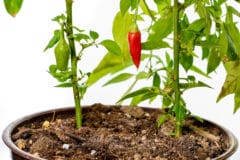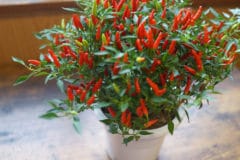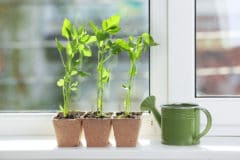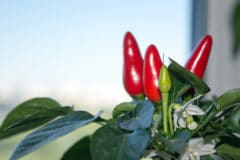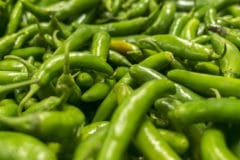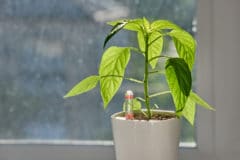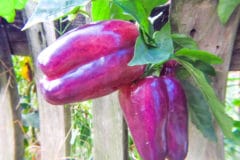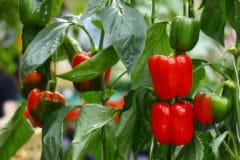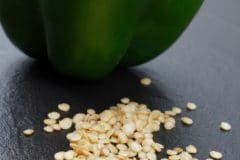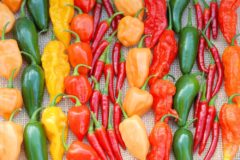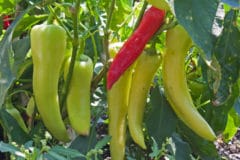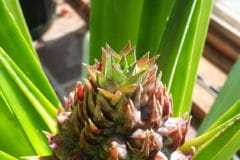Soil
Purchase a rich potting soil for your containers. Garden soil will compact and harbor disease. Potting soil contains ingredients like:
- Peat moss or coconut coir
- Vermiculite or perlite
- Bark
- Worm castings
- Screened compost
The peat or coir prevents compaction from occurring and holds water. The perlite or vermiculite is a volcanic rock that acts as a sponge soaking in water and nutrients. The compost and worm castings feed the plant as it grows.
Plant Care
Keep the containers in an area where temperatures stay above 65°F (18°C). Pepper plants in containers will need water once a day at these temperatures. If it rises to 80°F (26°C), water them twice a day.
The compost in the original potting soil will act as a slow release fertilizer. A liquid organic fertilizer or compost tea can be applied up to once a month, or when the plants begin to flower and fruit. A mixture of two tablespoons Epsom salt dissolved into one gallon of water can be sprayed onto pepper plants to feed and encourage ripening.
Build infrastructure for your plants as they grow. Some peppers may need staking to properly support their own weight.
Pollination
Bell pepper flowers are self-fertile, and will not need pollinators to produce fruit for the most part. Plants kept in containers indoors that aren’t exposed to natural airflow can fail to pollinate.
Some gardeners give each plant a slight shake as they walk by each day, expecting that pollen will drop on its own. This does work in many cases. It’s also possible to hand-pollinate pepper flowers to ensure that all of the blossoms produce fruit. Do this using a cotton-tipped swab or a small paint brush.
With a light hand, swirl the brush inside of each blossom. The anther is the male part of the flower and the stigma is the female part. They grow very close together in a pepper blossom, so transferring pollen is easy. The pollen will come from the anthers around the central stigma of the flower and transfer onto the stigma.
Harvest
Harvest bell peppers when they reach the desired size. If left on the plant to ripen, many varieties will turn shades of red, orange, yellow, or purple. Store in a paper bag on the counter to ripen, or in a plastic bag in the fridge to keep for 10-14 days.
